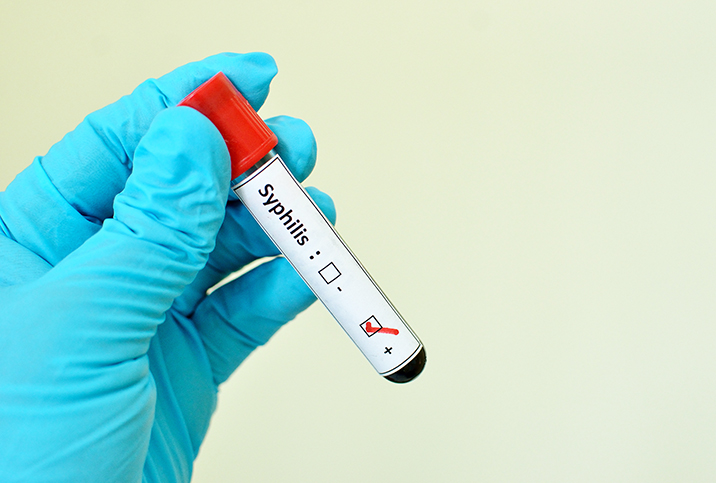The Problem With Syphilis and Its Symptoms

Until recently, syphilis was considered one of the more obscure or "old" sexually transmitted diseases (STDs). As it's now easily treated and managed with antibiotics, the infection that was once an almost certain death sentence had faded into relative obscurity.
However, in 2018, the Centers for Disease Control and Prevention (CDC) reported more than 115,000 new cases of syphilis in just one year, the most recorded since 1991. What led to the rise?
Answers vary, but asymptomatic people with infrequent or no testing, and improper or missed diagnoses largely account for the spread of this bacterial disease.
Know the symptoms
Symptoms for syphilis include small sores, usually on the genitals, followed by a rash covering the body, including the palms and soles of the feet.
The next stage of the disease brings more sores appearing on the genitals and mouth. Some people also lose hair, and some develop muscle aches and flu-like symptoms.
Latent syphilis is the next stage and, remarkably, all the symptoms can disappear except for occasional flare-ups that may not be diagnosed as being part of the original disease. During the early part of the latest stage, the disease is still very much contagious and is busy causing harmful organ damage as it progresses to the final tertiary stage.
If a positive diagnosis was not made in the first two stages of the disease, an infected person would never suspect they were still in danger and would never realize they could pass the disease on to others. During the latent stage of syphilis, the disease is very deceptive—if you recognized that you had a medical problem, now it feels as if you're cured.
The danger of misdiagnoses and self-diagnoses
Even in the first two stages of syphilis, some people are asymptomatic and never show symptoms. This obviously makes it extremely difficult to stop the spread of the disease.
Another issue that makes syphilis especially difficult to deal with is the symptoms are often mistaken for other diseases or allergic reactions. In the first stage of syphilis, the sores that appear are commonly located inside the vagina or anus, or on the underside of the penis. They may not be seen easily by the infected person. The rash in the second stage of syphilis can easily be mistaken for an allergic reaction. Also, symptoms of hair loss and muscle aches could be interpreted as nothing more than signs of stress or a mild case of common flu.
Even if symptoms are noticed and a doctor is consulted, syphilis may not be discovered as the culprit, treatment may be misaligned with the actual problem, and the symptoms may just disappear as the disease moves into a different stage.
Especially since syphilis had fallen off everyone's radar as being a common disease, misdiagnoses and lack of education have all contributed to the rise in syphilis cases.
Since you may not present symptoms or be familiar with syphilis, regular testing is recommended, especially if you are a sexually active person. Doctors recommend regular STD screening once a year unless you are having more casual sex with multiple partners, in which case every six months is safer.
Budget cuts
Perhaps the most disturbing rise in syphilis cases is congenital, when a mother passes the disease on to her newborn baby. Congenital syphilis rates rose by more than 40 percent between 2017 and 2018.
A common cause for this rise in cases is budget cuts. Pregnant women are tested for syphilis when they first see their doctor and are given antibiotics immediately if they have the infection. However, since 2008, when America fell into recession, the public health departments of many states began to shrink and were reduced by about a quarter in the decade following.
The consequence of this shrinkage has meant that medical staff has been stretched thin and there have been fewer checks on expecting mothers to make sure they’re taking their medications. Women who stop taking their medication fall through the cracks.
Furthermore, those same budget cuts reduced the amount of testing available. Even as our economy recovered post-2008, the STD testing sites have yet to return in full force.
The future of syphilis
The future of syphilis is in your hands. We have to make a concerted effort to stay educated, practice safe sex and get tested. If we can do this, we may once again find ourselves remembering syphilis as a disease of the past.
















